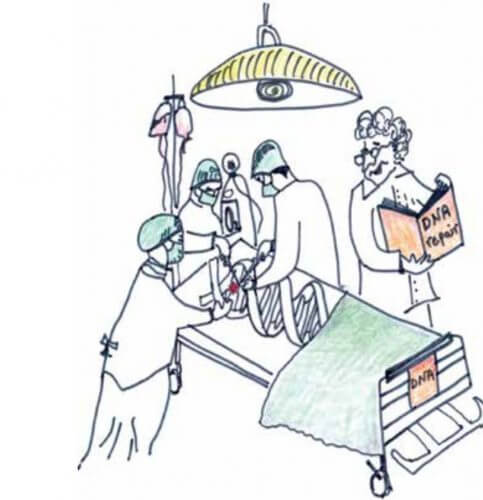Blood test to detect the risk of lung cancer

Most cases of lung cancer - the number 1 cause of death from cancer - are caused by smoking. For this reason, heavy smokers are the first in line for screening tests for the early detection of lung tumors - detection that allows patients to begin early treatment and improve their chances of survival. Today, people are referred for screening tests based only on age and extent of smoking, but these two risk factors are not enough - and most patients are not detected in these tests. Recently, Weizmann Institute of Science scientists and their colleagues in the UK presented a new protocol for referral to screening tests for lung cancer, based on a simple blood test. The protocol is based on the "DNA repair index", previously developed by Prof. Zvi Livna and senior faculty scientist Dr. Tamar Paz-Elitzur from the Department of Biomolecular Sciences. This index calculates the activity of three DNA repair enzymes that are involved in the body's response to damage to the genome.
The current study, the findings of which were published in the scientific journal Journal of the National Cancer Institute - Cancer Spectrum, was partnered by Prof. Sir Bruce Ponder from the University of Cambridge and Prof. Robert Rintoul from the Royal Papworth Hospital and the University of Cambridge. The participants in the study, residents of Great Britain, were divided into two groups: an experimental group of 150 NSCLC lung cancer patients and a control group of 143 healthy people. The researchers measured in the blood of each participant the activity levels of the three enzymes involved in the response to damage to the genome, and calculated their DNA repair index. The DNA repair indices of the participants with lung cancer were lower than those of the control group, and this enzymatic activity has been shown to be a strong biomarker of lung cancer risk, regardless of smoking. These results confirm results from a previous study by Prof. Livna, who tested the DNA repair indices in the Israeli population, and therefore it seems that the new approach has applied potential for promoting and improving screening tests for lung cancer all over the world.
Together with his colleagues, Prof. Livna showed that when the DNA repair index is low, the risk of developing the disease is five times higher compared to a risk assessment based on age and the extent of smoking alone. It is possible that a low DNA index can also explain why people who do not smoke - and are usually not referred for screening tests - develop lung cancer, and thus contribute to the development of clinical criteria for early diagnosis in the non-smoking population. These findings may have important implications for improving the effectiveness of screening tests for lung cancer and improving the accessibility of people at risk to early diagnosis and treatment.
Another and unexpected finding that emerges from the study is that a low DNA repair index in lung cancer patients, but not in healthy people, is found in accordance with the widespread activation of expression of gene pathways that regulate the body's immune response. That is, the DNA repair index data - obtained from a blood test - has the potential to help doctors predict how certain lung cancer patients will respond to immunotherapy, and thus advance personalized treatment.

One response
The research direction is wrong. A DNA test must be developed that will locate the genes that lead to lack of self-control and smoking, in order to enable early termination of those at risk.